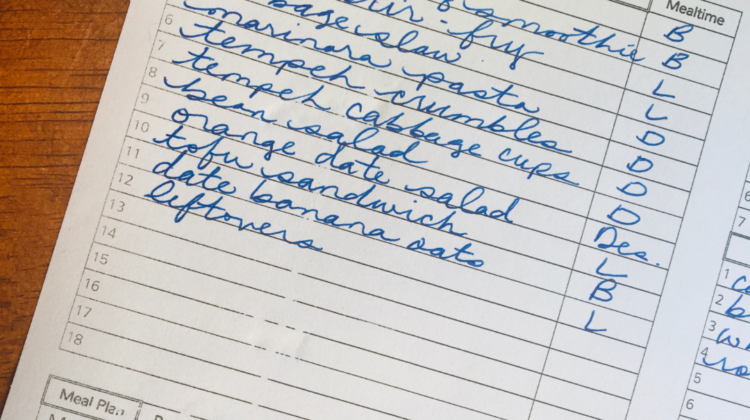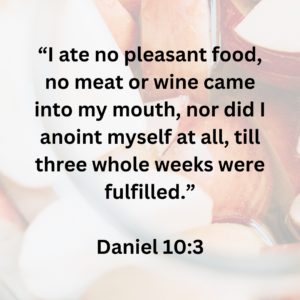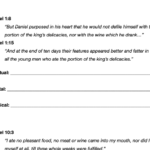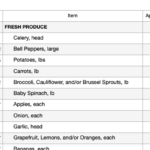
Wondering what the best plant based emergency foods are? In this post you’ll find a comprehensive vegan emergency food shopping list including the best non-perishable food for emergencies. Additionally, a 31-day food rationing chart and directions for rationing meals.
These foods are shelf stable and perfect for creating your own homemade vegan emergency food kit. This list contains survival food items that do not contain meat, eggs, diary, and seafood.
Vegan emergency foods
The items on this list are also easy to store, low-cost, and considered part of a healthy, whole food, plant-based diet as recommended by NutritionFacts.org. They recommend a low-fat, whole food, oil-free, plant-based diet known as the Daily Dozen which this list follows.
Consider how many people you plan to feed during an emergency, and how many days you may need to feed these people. Also, plan ahead for potential spills and accidents if possible.
Vegan emergency survival food kits
Many emergency food kits are not vegan friendly and do not provide a variety of meals, especially ones that appeal to vegans and those on a plant-based diet. The good news is you can easily create your own survival food kit. This shopping list can be used to create:
- Emergency food kits
- Earthquake food kits
- Doomsday prepper food kits
- Survival food kits
- Long term survival food kits
- Blackout survival food kits
- Hurricane survival food kits
View vegan emergency food options on Amazon.com >
Plant based emergency food shopping list for 2024
Here’s our complete list of ingredients to stock your pantry in preparation for an emergency. The affiliate product links below will take you to Amazon.com.
Legumes
Beans, lentils and peas are all part of a healthy vegan diet and are packed with plant-based protein and fiber. Make sure to have plenty on hand, especially cans that are easy to eat when you don’t have access to cooking. Additionally, chickpea flour is a great ingredient to have on hand because it can easily be used to make crepes, baked goods, flatbreads, etc.
- Canned beans
- Dried beans (for sprouting)
- Chickpea flour
- Canned bean soups
- Roasted chickpeas
Leafy Greens
Leafy greens are very important for maintaining health during an emergency, however fresh leafy greens may be hard to come by in an emergency. Having dried leafy greens in your emergency food kit is important. The easiest and cheapest leafy green to store in your kit is dried seaweed and dried leafy green powders.
- Dried seaweed sheets
- Dried seaweed snacks
- Spirulina powder/tablets
- Dried leafy green powders
- Kale chips
Vegetables
Vegetables are important for maintaining health on a vegan diet, especially in an emergency. Stock up on a variety of vegetables, including ones that you can enjoy immediately (out of a can) for when you are in a hurry or have limited access to cooking.
- Canned vegetables
- Freeze dried vegetables
- Canned tomatoes
Whole grains
There are many easy-to-prepare whole grain options for your emergency survival food kit, including pre-cooked grains, instant grains, flours, and pastas. Consider what cooking equipment you have available, as well as what other supplies and access you will have during an emergency (i.e. Will you have electricity to boil water for pasta? Will you have enough fuel to cook rice?).
One whole grain that we highly recommend is rolled oats and oat flour because oats can be used in a variety of ways and most people can eat them. Oats can be enjoyed raw, toasted, as a cereal, blended with water to make a plant milk, ground into a flour to use in making flatbreads, pancakes and baked goods.
- Pre-cooked grains
- Instant grains
- Rolled oats
- Dry cereal
- Pasta
- Oat flour
- Wheat flour
- Corn flour
- Cous cous
Fruits
Fruit is part of a healthy vegan diet and it’s important to get fruit into your diet on a daily basis. Fruit can be enjoyed as a snack, as a topping, in a smoothie, and made into snack bars when mixed with nuts or seeds.
- Canned fruit
- Dried fruit
- Freeze dried fruit
- Fresh fruit
- Applesauce
- Dates
- Fruit leathers
- Fruit squeezers
Nuts
Nuts are recommended as part of a healthy vegan diet and are excellent for long term vegan survival food storage. Nuts can be enjoyed whole, ground, made into milks, and nut butters can be used in baking, as a spread, and more.
- Walnuts
- Cashews
- Almonds
- Brazil nuts
- Peanuts
- Peanut butter
Seeds
Seeds are recommended as part of healthy diet. They also are great for making plant milks, toppings, snacks, baked goods, and enjoying as is.
- Chia seeds
- Flax seeds
- Hemp seeds
- Pumpkin seeds
- Sunflower seeds
- Sesame seeds
- Tahini (sesame seed butter)
Berries
Berries are recommended as part of a healthy diet and they are also part of the Daily Dozen recommendations. Make sure to stock up on berries in your emergency food kit to ensure you’re getting the nutrients you need during an emergency:
- Freeze dried berries
- Dried berries
- Berry powders
- Fresh berries
Herbs & Seasonings
Salt and pepper, as well as the other following ingredients are very important for flavoring your food during an emergency. Some also provide nutrients we need on a regular basis (such as iodine, B-12, protein, etc).
- Iodized salt
- Black pepper
- Nutritional yeast
- Garlic powder
- Dried herbs
- Cinnamon
- Turmeric powder
Sauces & Condiments
Sauces and condiments make life better. Stock up on your favorite sauces and condiments to add flavor to emergency meals. Many of these can be stored at room temperature if necessary and pack a lot of flavor. They are also relatively inexpensive and easy to store as well.
- Ketsup
- Sauces
- Hot sauce
- Vinegar
- Mustard
- Salsa
- Jam/Jelly
Snacks & Quick meals
During an emergency there will most likely be a time when you just need something to eat and don’t have the time, energy or capability to cook a meal. The following snacks and ingredients are perfect for making quick meals during an emergency:
- Canned/boxed soups
- Energy Bars
- Crackers
- Chips
- Peanut butter and crackers
- Plant milk and cereal
- Vegan packaged noodle bowls
- Vegan protein powder
- Rice cakes
- Vegan cookies
Vitamins
Vitamins are easy to store and essential to maintaining health everyday and in an emergency.
- B-12 supplement
- D-3 supplement
Baking
You can make some very delicious meals with the following ingredients that are ideal for baking. Flour can be made into tortillas and flatbreads, as well as pancakes and other stovetop creations. Sweeteners can be use to make simple desserts. Plant milk can be used for baking, and also for drinking and adding to cereals.
- Whole Wheat and/or Gluten-free Flour
- Sugar
- Baking Soda
- Maple syrup
- Cinnamon
- Boxed plant milk
- Powdered plant milk
Equipment
- Containers for storing food
- Ziplock bags
Water
Make sure to stock water in your emergency food kit. Pack enough water for drinking and for cooking. Then, pack more just in case. Water filters are also great to have on hand.
- Bottled water
- Water filter
- Filter straw/bottles
Tips
- Review your vegan emergency prep food items throughout the year, ideally each quarter (January, April, June, September). Use the food prior to its expiration. Make sure to replenish your stock as you use it.
- Purchase food that has a far off expiration date, ideally 12 months shelf life still remaining.
- Choose foods that have minimal ingredients, ideally with very minimal or zero preservatives. Choose foods that have a naturally long shelf life over foods that need lots of preservatives to stay fresh.
31-day food ration chart
Below is a 31-day food ration chart for one person. Multiple these numbers by the number of people you plan to feed. The calculations below are based on general nutrition guidelines for dietary intake of vegetables, fruits, whole grains, legumes, nuts, seeds, and water. Please consult your physician prior to making any changes to your diet based on the recommendations below.
This chart also takes into consideration access to electricity and cooking ability.
| Category | Daily Need | Monthly Need | Serving Size |
| Legumes | 3 | 93 | 1/2 cup cooked |
| Whole Grains | 3 | 93 | 3 pieces or 1/4 cup or 1/2 cup cooked |
| Fruits | 3 | 93 | 3 pieces or 3 cups diced |
| Leafy Greens | 2 | 62 | 1 cup fresh or 1/2 cup cooked |
| Vegetables | 2 | 62 | 1 piece or 1 cup diced |
| Berries | 1 | 31 | 1/2 cup fresh or 1/4 cup frozen |
| Cruciferous | 1 | 31 | 1/4 cup |
| Seeds | 1 | 31 | Tablespoon |
| Nuts | 1 | 31 | 1/4 cup or 2 tbsp nut butter |
| Herbs & Spices | 1 | 31 | 1 tsp ground turmeric, or 1 tsp other |
| Water (gallon) | 0.47 | 14.6 | 60 oz (7 1/2 cups) = .47 gallons |
Print this and place it into your recipe binder:
How to ration your food supply
Wondering how to ration your food supply? If you’re on a food budget, trying to lose weight, have little access to food, or are hunkered down for the coronavirus self quarantine, you may be wondering how to ration food for 31 days or longer. Below is a simple method for rationing your food supply along with an equipment. Print this guide and save it in your recipe binder.
- Quart Ziplock Bags
- Gallon Ziplock Bags
- Large pot
- Steamer basket
- Knife
- Cutting board
- Vegetable Grater or Food Processor
- Tongs
Step 1: Take inventory
- First, you’ll need to know the total of everything you have on hand in your pantry, refrigerator and freezer. Use this printable inventory sheet to determine your food inventory, or use a scratch piece of paper with a pen. List everything you have by the number of servings, not by weight or number of packages. If you calculate the number of servings you can easily meal plan and know how many servings of each ingredient you have total.
Step 2: Plan your meals
- Next, you’ll need to make a meal plan for the entire time you plan to ration your food, for this example, plan for 31 days of food rations. Here’s a few food ration meal planning tips:
- Plan meals around what you need to eat – maintaining your health is very important, and food can either improve or harm your health. When meal planning, it’s important to plan your meals around the foods that we need to eat on a regular basis, such as whole grains, leafy greens, berries, etc. This will ensure you are staying on a healthy diet during food rationing.
- Plan meals around what you have – sometimes you may need to plan meals around what is already in your pantry. If this is the case, focus on using up the foods that will perish first, then on foods that can be cooked. Leave all quick and easy foods for emergencies when you cannot cook the food, if possible.
- Plan easy-to-prepare meals – choose meals that are easy to prepare with very little steps involved. This will save you time an energy.
- Plan easy-to-enjoy meals – choose meals that can easily be reheated on the stove in a pot or pan with a lid, baked, blended or enjoyed as-is. This will save you time and effort at meal times.
- Plan easy-to-store meals – choose meals that can be condensed down and for storage in the freezer and refrigerator. Avoid choosing meals that cannot be portioned prior to storing.
Step 3: Prepare your homemade meal ration kits
- Once you’ve decided what you want to eat for the upcoming week or month, it’s time to get cooking. Here’s a few tips for making homemade meal ration kits:
- First in, first out – Use foods that will expire in the near future before foods that have a longer shelf life.
- Prep your ingredients – Cook your whole grains and legumes, then cool completely before serving. Steam, chill and freeze shredded or diced vegetables. Tip: Place prepped ingredients into muffin tins to create individual frozen servings. This will help you when calculating how many servings you need or have on hand.
- Use ziplock bags for storage – Ziplock bags are the ideal way to ration food because they can be washed and reused again and again. Glass containers are good as well, but when you’re rationing food it’s ideal to be able to package each serving. Additionally, ziplock bags aren’t rigid like storage containers, meaning you can place more ziplock bags into a freezer than containers. This is ideal if you’re stocking food in bulk at your home and if you feed more than one person.
- Create homemade meal kits – the ideal way to store and ration food is to prepare homemade meal kits before storing your food supply. Simply combine several frozen foods into a ziplock bag to create easy stir-fry dishes, pastas, grain bowls, smoothies, and similar meals.
31-day Food Ration Chart
Below is an approximate summary of how many servings per ingredient one person needs per month (31 days) to maintain a healthy diet. Please consult your physician prior to changing your diet based on these recommendations.
- 93 servings Legumes (1/4 cup dry or 1/2 cup cooked)
- 93 servings Whole Grains (3 pieces or 1/4 cup or 1/2 cup cooked)
- 93 servings Fruits (3 pieces or 3 cups diced)
- 62 servings Leafy Greens (1 cup fresh or 1/2 cup cooked)
- 62 servings Vegetables (1 piece or 1 cup diced)
- 31 servings Berries (1/2 cup fresh or 1/4 cup frozen)
- 31 servings Cruciferous (1/4 cup)
- 31 servings Seeds (1 tablespoon)
- 31 servings Nuts (1/4 cup or 2 tablespoon nut butter)
- 31 servings Herbs & Spices (1 tsp ground turmeric or 1 tsp other)
- 14.6 gallons Water (.47 gallons per day)




